Comparison of Door Readers Used in Access Control Systems
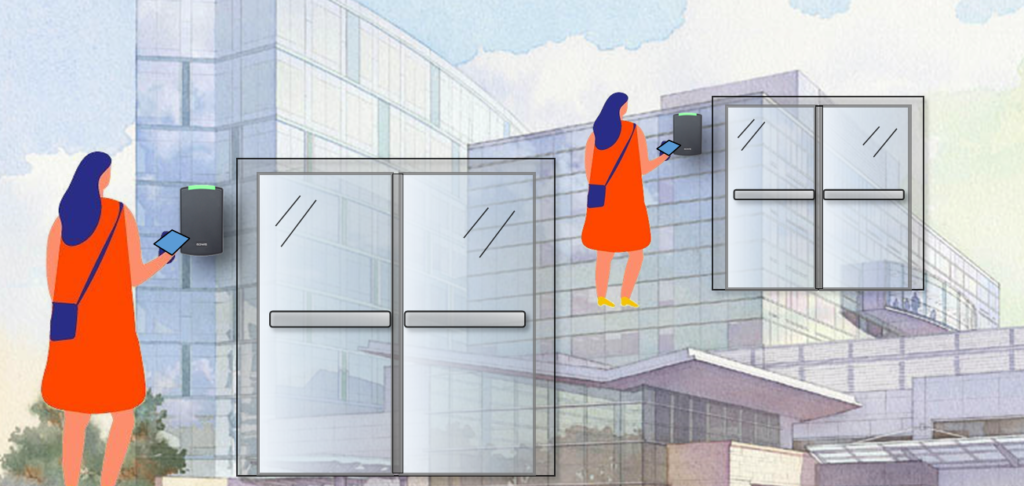
A door reader is an integral part of a door access control system. It is the interface between the person at the door and the rest of the access control system.
We have come a long way since the early magnetic stripe cards. The new door readers can read RFID card credentials, mobile phone credentials, and biometric credentials. Some of the door readers are combinations of a reader and a controller. This means that all the intelligence is built into the reader at the door. This reader-controller connects to the network.
This article provides a comparison of available door access control readers.
What is a Door Access Control Reader?
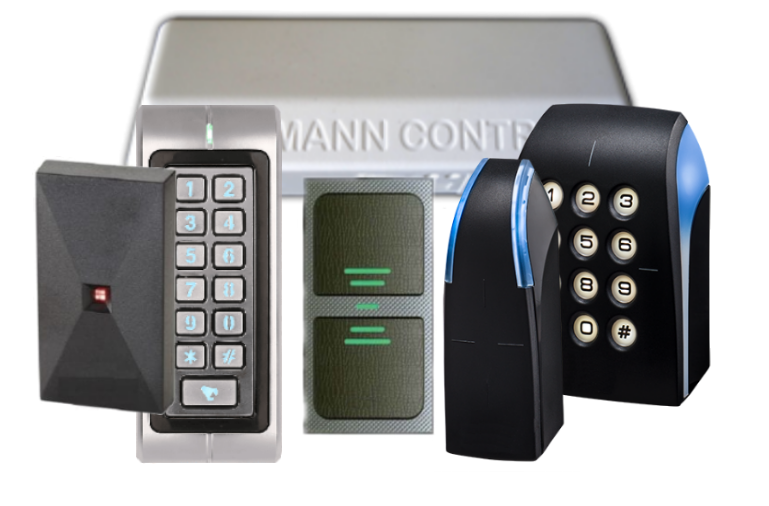
An access control door reader is a device placed at an entry point that is used to determine if a person can enter the door. The door reader reads a credential that is presented by the person entering.
The credential is something that a person carries (like a card) or a biometric signature such as a fingerprint. If the credential ID (or biometric identifier) matches the registered access control list, the electric door lock is opened.
Proximity Door Readers
Proximity RFID readers connect to an access controller such as the Hartmann controller, using the Wiegand or OSPD (Open Supervised Device Protocol) interface. You can select readers for indoors or outdoors applications. Some readers include keypads that can be used instead of a credential or enhance security by requiring a secondary access code.
There is a choice of economic credentials such as cards and keyfobs. There are 125 kHz frequency credentials and 13.56 MHz frequency credentials used by Smart cards (or Mifare). A few readers can handle both frequencies.
RFID is a Radio Frequency Identification signal that is used to communicate between the credential and the door reader. The credential (a card, keyfob, or tag) contains an antenna, responding electronics, and an identification number.
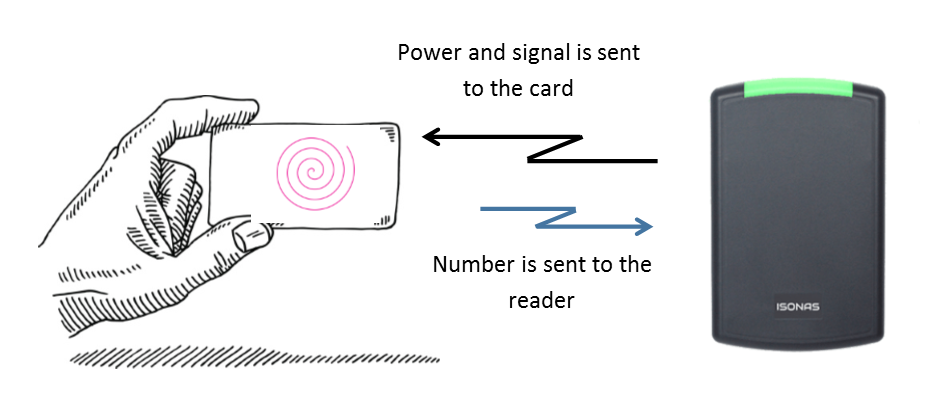
The reader broadcasts a signal that is received by the credential antenna. The broadcasted electrical signal from the door reader contains enough power to energize the circuit in the credential. Once the electric circuit in the credential receives enough power, it sends back a signal to the access control reader that includes its identification (ID) number.
Reader-Controllers
Some readers, such as the Isonas reader, have the controller built-in. This reduces the wiring and makes it easy to install.
Readers that Use Your Mobile Phone as the Credential
Smartphones can be used as a credential. This is a nice touchless door entry method that saves money on card credentials. The app on your smartphone provides the ID to the door reader. The Isonas reader-controller is an example of a door entry device that can read both RFID proximity credentials and mobile credentials.
The Hartmann Enterprise Door Access Control System includes more sophisticated mobile readers that provide a variety of methods for opening. For example, you can wave your hand in front of the reader without taking out your phone.
Since mobile phones use biometrics to use them, it provides increased security.
Biometric Door Readers
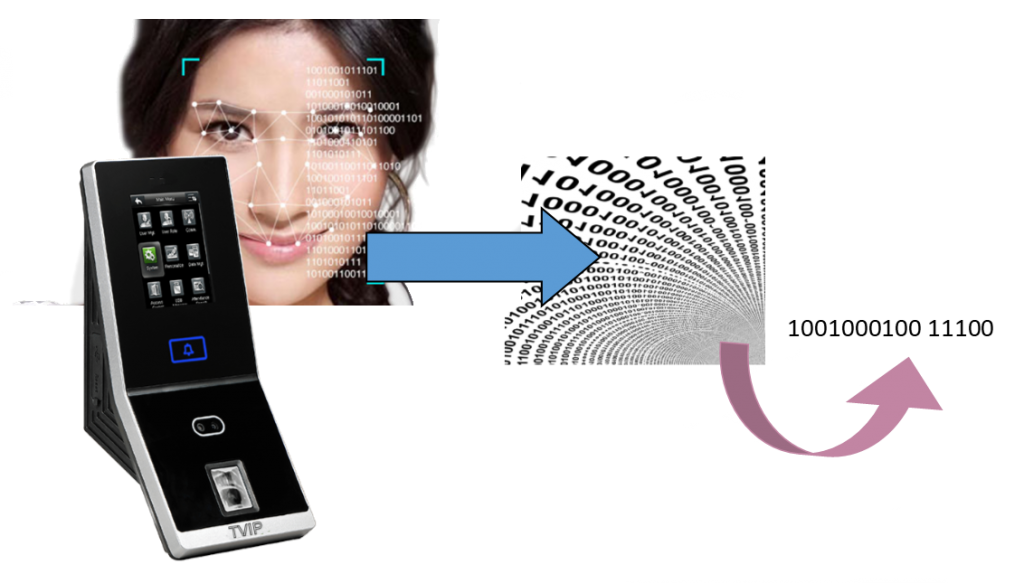
Biometric readers are the most secure entry control device. You can forget your card credential, but not your face or finger. You don’t have to worry about your fingerprint or face being stolen. Instead of storing a picture of our actual fingerprint or face, the biometric readers capture only a small subset of data and convert these minutiae points to encrypted binary data. The code can only be retrieved using a mathematical algorithm that has no physical relationship to the biometric.
Fingerprint Door Readers
Most fingerprint readers are used indoors. The TVIP3F-ProWP is one of the few biometric readers that can be used outdoors. The basics are simple. Each person’s fingerprint is unique, and the pattern created by the fingerprint has been quantified by law enforcement. It includes several basic patterns such as arch, loop, and whorl that are used for identification.
Many fingerprint readers can also use card credentials or PINs to control entry. Select the fingerprint reader…
Finger vein
Vein pattern recognition dramatically increases the reliability of the biometric reader. The multi-biometric capability processes the vein pattern under the finger as well as the fingerprint. This biometric information is captured and converted to a biometric template. The matching and verification algorithm is more accurate than using fingerprints.
Face recognition
These specialized facial recognition systems use cameras to capture the full facial image. The software then uses various computer algorithms to build a definition data set, including machine learning. Facial recognition indoors is more reliable than outdoors because the changing light makes the recognition process difficult. The TVIP-Face8WP face recognition panel is one of the few outdoor devices because it has intelligence that allows operation in changing light and weather conditions.
Our article, Face Recognition for Door Access Control, provides more details about access control technology.
Face recognition and Temperature Measurement
Over the last year, new face recognition panels have been introduced with temperature measurement. This allows any organization to check the identity and the temperature of the person entering.
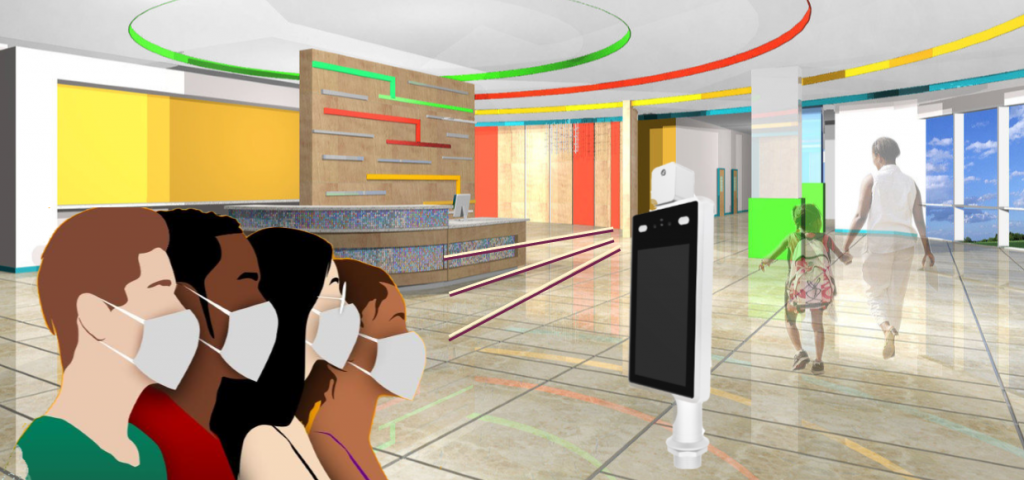
These panels can control a door, make audio announcements, detect if a person is wearing a mask, and notify a central security person over the network. Learn more…
Smart Intercom Door Systems for Apartments and Multi-tenant Organizations
An apartment intercom is a communication device used in the lobby or at the front entrance of a multi-tenant building or apartment house. It provides a connection to the tenants. This type of reader-controller is used to control visitors. Some units also include RFID-type capability that allows the tenants to enter the building.

The new wireless intercom allows you to contact the resident’s smartphone or standard phone to request entry into the building. The lobby intercom display provides a list of all the tenants in the building.
Summary of Door Readers
There are many different types of door reads. The best kind of reader depends on your application. The door readers can connect to a controller or can include built-in controllers. The biometric readers provide the highest level of security, while the RFID-type readers cost less. Specialized readers with controllers have advanced capabilities such as smartphone credentials, intercoms, and visitor control.
To learn more about door readers for access control, please get in touch with us at 800-431-1658 in the USA or 914-944-3425 everywhere else, or use our contact form.